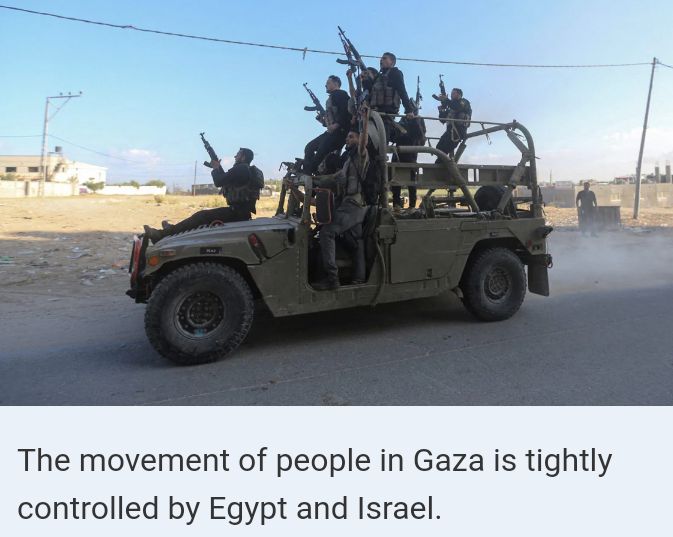Despite making a total withdrawal in 2005, Israel still maintains control over the land, air, and sea borders in the Gaza Strip to maintain rigorous control over the flow of weaponry to Hamas in the area.

After moving into the next phase of its all-out offensive, Israel imposed a complete lockdown on the Gaza Strip and declared that it would completely destroy Hamas. 2.3 million people live in the Gaza Strip, a small territory that is under the jurisdiction of the Palestinian organization Hamas and is roughly one-fourth the size of Delhi.
Israel maintains rigorous control over the land, air, and marine borders in the Gaza Strip despite a total pullout in 2005 in order to prevent the passage of weaponry to Hamas in the area. With only two border crossings in a 365 sq km region of land, Egypt and Israel carefully regulate the movement of people in Gaza.

How Hamas Gets Weapons In Gaza?
As seen in the map, the Gaza Strip is surrounded by Israel from two sides and shares a border with Egypt. The Western end faces the Mediterranean Sea, where the Israeli Navy restricts the movement of people only up to 12 nautical miles.
Weapons are dropped by arms smugglers on the Mediterranean Sea shore, where they are later given to Hamas. Despite Israeli Navy marine control, the armament sources were successful in providing the organization with weaponry.
To deliver firearms, the arms smugglers take an alternate route through tunnels.
Egypt and Gaza share a border, and tunnels are being constructed to transport weaponry there. Weapons including the Fajr-3, Fajr-5, and M-302 rockets are sent from Iran and Syria via the tunnel network.The Fajr-3 is an unguided surface-to-surface artillery missile made in Iran. Hezbollah, a group with close ties to Iran and Syria, has the Fajr-3 in its arsenal. It has a 43 km range. The Fajr-5 carries a 90 kg high explosive (HE) with an enhanced range of 75 kilometers.
A long-range unguided rocket employed by Hamas, the M-302 rocket or Khaibar-1, is likewise made by Iran and is apparently provided by Hezbollah.
Over 5,000 rockets were launched from Gaza during the initial wave of strikes against Israel. Hamas has improved its primitive rocket technology over time to increase its range, and it is claimed that missiles supplied by Iran were used to overpower Israel’s virtually impregnable Iron Dome air defense system.
Iran has supported Operation Al-Aqsa Flood by Hamas, although it has dismissed Israel’s assertions that it is supporting the operation and denied having any direct role in the conflict.
In 2021, the US State Department claimed that Iran provides Hamas with finance, training, and weaponry. According to sources, Iran provides 70% of all the funding for Hamas.
Taliban Relationship
According to several reports, the Taliban are supplying US-made weaponry to Hamas from Afghanistan. The US withdrew from Afghanistan in 2021, leaving behind a stockpile of weapons that the Taliban later confiscated after seizing power.
In the Mediterranean, a US carrier battle group
US has mandated that warships and aircraft get closer to Israel’s action was intended to show solidarity for its friend. The USS Gerald R Ford is leading a carrier battle group as it heads for the eastern Mediterranean.
Reports suggest the US carrier strike group will help Israel defend the seashore along Gaza to stop the supply of weapons.
The United States, a major supplier of arms to Israel, has moved quickly to affirm its backing for Israel after Saturday’s surprise attack from the Gaza Strip, vowing “rock solid” support and warning other parties to stay out of the conflict.
The group, led by USS Gerald R Ford, includes a guided missile cruiser and four guided missile destroyers, US Secretary of Defence Lloyd J Austin said.
